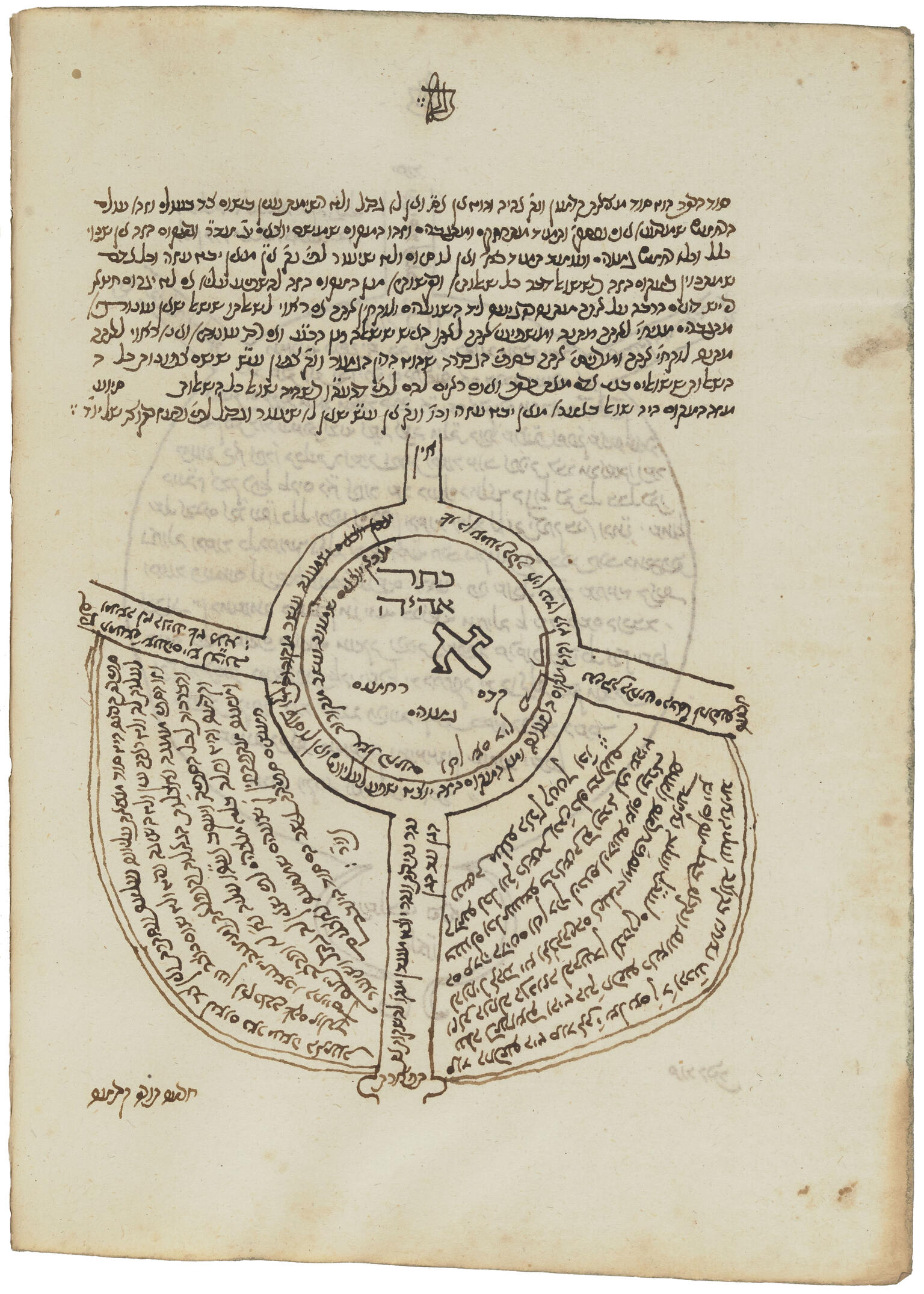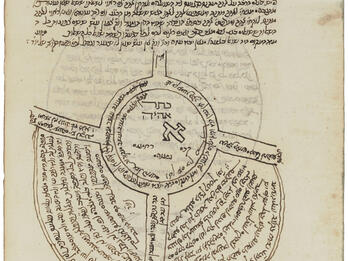Sha‘ar ha-hakdamot (The Gate of Introductions)
In the Name of Another
The intention of the Supernal Emanator was for the choice [free will] of doing good or evil to be given to those in the lower realm, [and] for them to have reward or punishment for their labor. And behold, the root of good comes from the great light within the supernal vessels, and the root of evil and the shells comes from the broken vessels. And if at the outset they had been emanated according to the aspect of repaired countenances, everything would have only been good, without any evil. But then there would not have been any choice, nor reward and punishment. However, now that good and evil were created in the world, there is a reward for the righteous who, by way of their good deeds, raise up the sparks of good holiness from within the evil and the shells. And there is punishment for the evil person who, by way of his deeds, drops and lowers the sparks of light into the shells. [ . . . ]
Homily on the World of Emanation
Know that in the beginning, when these ten sefirot came forth, they were not yet in a state of tikkun [repair]. Indeed, at that point, they came forth with the property of being ten points alone, and there was within them the property of essences and vessels, i.e., light and vessel. And since they were not in a state of tikkun, the property of vessels that was within them could not bear the supernal light, and they were annulled, and they died. And these are the secret of the kings who died. . . . For in the beginning, they were included within one point, and they could not reveal their actuality and bring forth their potential [into actuality], on account of the lack of tikkun of the vessels. Afterwards, by way of impregnation, all of the vessels were repaired and made into a complete countenance, and then they brought forth their potential into actuality, for the light of that point was divided into ten parts, and they showed their potential sight to the eyes and hearing to the ears. [ . . . ]
Know that in the beginning of everything, all of existence was a simple light and was called the eyn sof [infinite]. And no place was vacant in terms of space and air. Rather, everything was full of the light of eyn sof. And when it arose in the will of the Emanator to emanate the emanated entities, [ . . . ] then He withdrew Himself in the middle of His light, at a point in His center. He withdrew Himself and His light distanced itself into its surroundings, and a vacant space remained in the middle. And behold, the place of this space that remained vacant in the middle of the light of the Supernal Emanator, as mentioned, was made perfectly round. And afterwards, in this place were emanated each and every one of the worlds. And the light of eyn sof remained encircling and surrounding each and every one of the worlds, equidistant from all of their circumferences. Know that after He withdrew Himself into the surroundings, and an empty space remained in the middle, as mentioned. Then, behold, the Supernal Emanator tread on one of the sides of this round place and drew one thin line as a type of small channel. And this was by way of the light of eyn sof, which is drawn and emanated into the empty space, and whose light fills it. And it is in terms of emanated entities that were emanated there, as has been explained. However, there remains a small breach of empty space between the light of eyn sof that surrounds this place and the light drawn from it through the line, that was mentioned, that fills this place within, as was mentioned. For if they were to join together, then everything would return to how it was in the beginning, and everything would be as eyn sof alone. Thus, for this reason, the light of eyn sof is only drawn into this place by way of the thin, small, and very narrow line. And by way of this line, the emanated entities within this place receive the light of eyn sof. And this is the manner of conjunction of the Emanator with the emanated, by way of that line alone.
Credits
Ḥayim Vital, “In the Name of Another (Ve-tikun hamalkhim)” and “Homily on the World of Emanation (Derush ve-olam ha-atsilut),” in Sefer shaʻar ha-hakdamot (The Gate of Introductions (Jerusalem: Shmuel Zuckerman, 1909), pp. 40a, 54c.
Published in: The Posen Library of Jewish Culture and Civilization, vol. 5.






